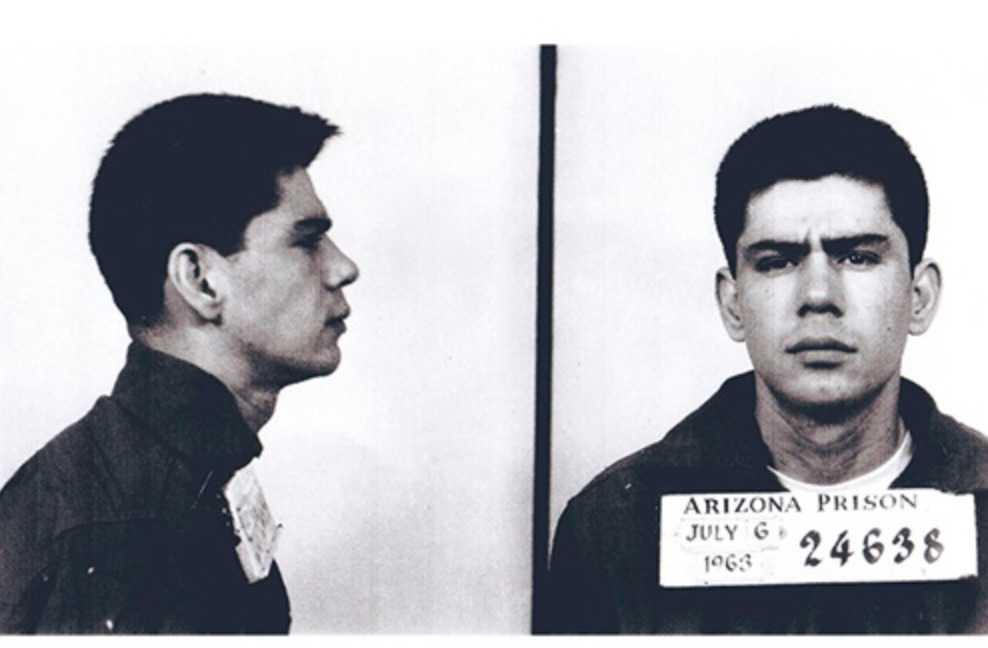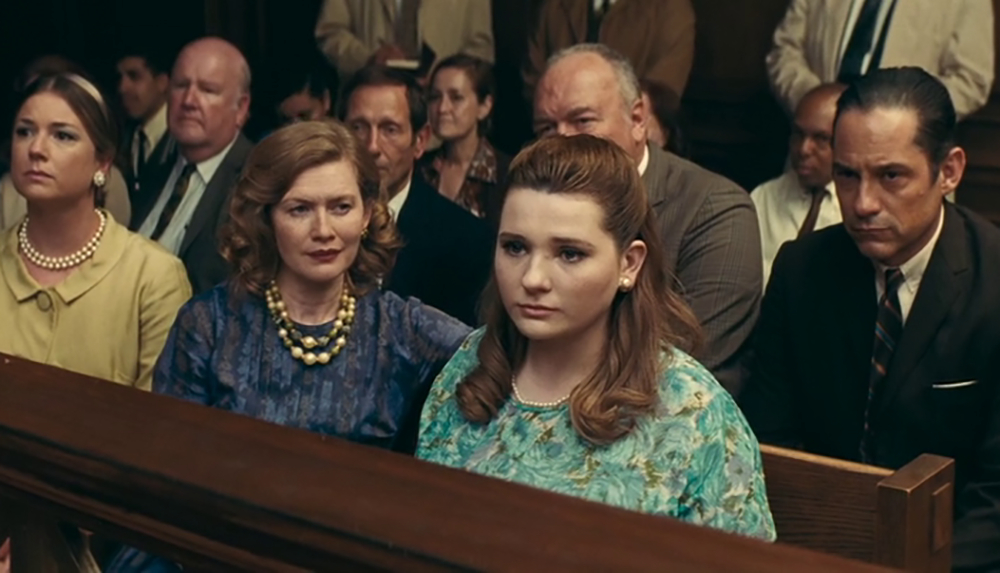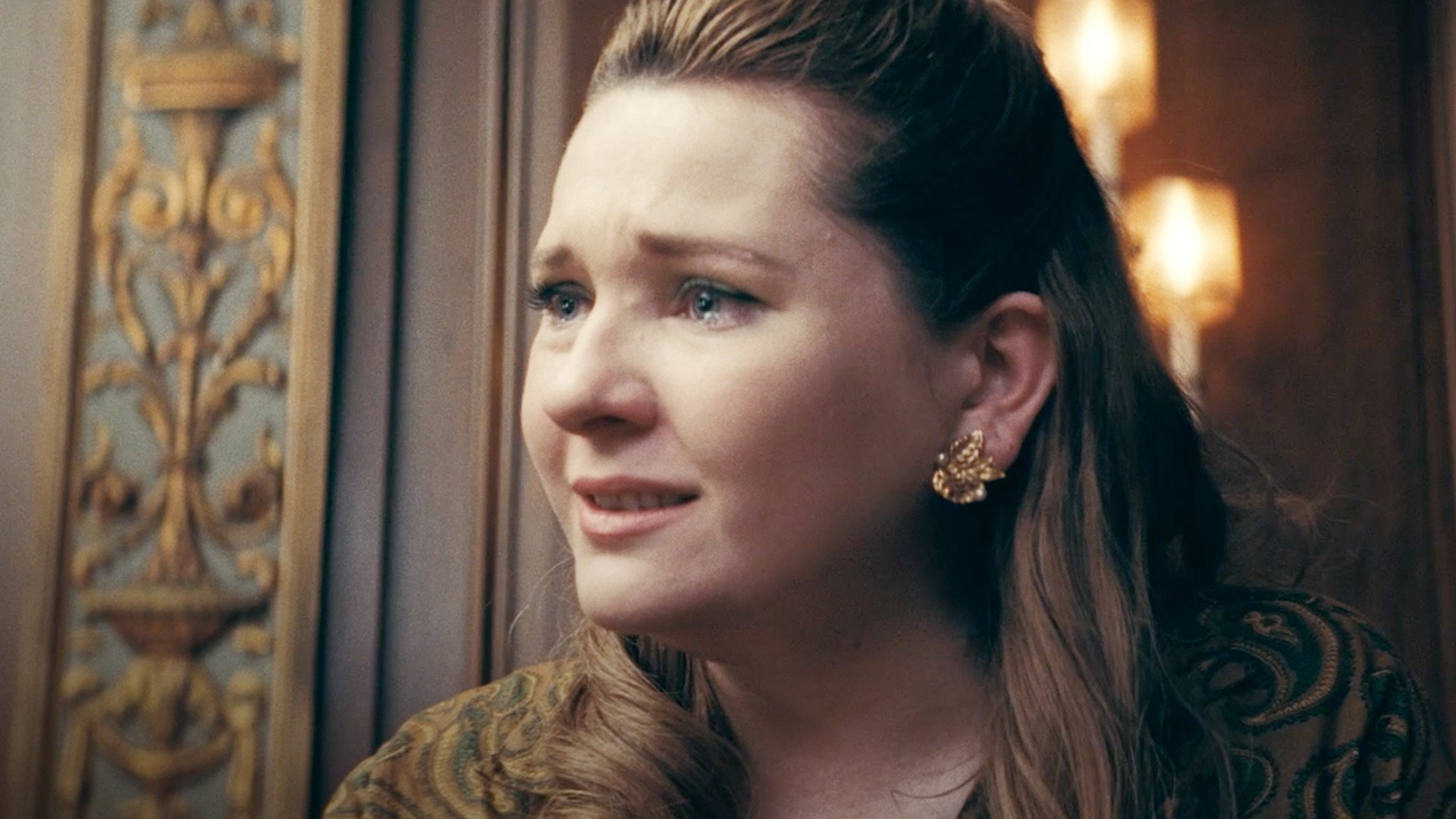Directed by Michelle Danner, ‘Miranda’s Victim’ recounts Patricia Weir’s violent sexual assault by Ernesto Miranda in 1963, an era where reports of such crimes against women were often suppressed. Patricia embarks on a quest for justice, but Miranda vehemently fights for his freedom, unfolding a legal saga spanning decades. Continuously facing pressure to abandon the case and lead a domestic life as she was expected to, Miranda is not ready to let her perpetrator walk away, but as the events unfold, it gets difficult for her to champion keeping Miranda in prison.
The 2023 film deals with this sensitive subject with utmost nuance and brilliance. The horrors of the crime committed against Miranda are spread through the movie in the form of flashbacks, yet it is never used as bait to capture attention. The audience’s imagination is captured by telling the story of a victim and a criminal as they set on a long journey in which they are inadvertently tied together.
The Case That Changed the Legal History of the US
‘Miranda’s Victim’ is a biographical film portraying the true-life events in the life of Patricia “Trish” Weir in 1963. It is driven by a script by J. Craig Stiles, which is developed from a story by Stiles, George Kolber, and Richard Lasser. In 1963, Patricia, who was employed at Paramount Pictures in Arizona, was kidnapped by Ernesto Miranda while walking home from work. In the back of his car, the then-18-year-old endured a sexual assault and was dropped off on the roadside. Upon reaching home, Patricia reportedly faced discouragement from her mother, Zeola Weir, about pressing charges. Yet, with her sister’s support, she summoned the strength to report the crime, identifying Miranda.

It led to Ernesto Miranda’s arrest on March 13, 1963, marking a pivotal moment in legal history with the subsequent Miranda vs. Arizona case, which has led to the implementation of Miranda Rights for all police interrogations and suspects. It is marked as a very important incident in the country’s history; it is very surprising that this story had not been told before. When director Michelle Danner was asked the same, she said, “I was approached with this story, but the minute that it was offered to me to direct I immediately thought, ‘Oh my god. How come this was never told…This is the first movie that tells the true story of what happened.”
Talking about how connected to the story she was directing, the filmmaker added, “Everybody, I think, might know somebody close to them that endured something so traumatic like this. I have. It didn’t personally happen to me, but somebody very close to me. It’s something that really can destroy lives. It’s a crime. Yes, you’re not dead, but something dies inside of you. And you have to go on and keep living and find a way to deal with it.” Ernesto Miranda’s two-hour interrogation, following Patricia’s report, lacked information about his right to counsel or the right to remain silent. Consequently, he verbally confessed, further signing a statement acknowledging his guilt.

In his trial, the defense argued against the admission of the confession due to procedural failures in informing Miranda of his rights. Despite objections, the court overruled, resulting in Miranda’s conviction for kidnapping and rape and a 20 to 30-year sentence. Following months in prison, Miranda appealed his conviction to the Arizona Supreme Court. Patricia went on to tie the knot with Charles Clarence Shumway, and they had a child. faced the resurgence of a painful past, jeopardizing her seemingly stable life. Despite her reluctance, Miranda appeared in court, but the Arizona Supreme Court ruled that he should have explicitly requested an attorney, dismissing his appeal.
Unyielding, Miranda was determined to challenge this decision also. Ernesto Miranda appealed to the United States Supreme Court, and in a landmark decision by a 5-4 vote, his convictions were overturned. This ruling marked a pivotal moment in legal history, affirming a suspect’s rights during police interrogations. The Supreme Court mandated that, before any questioning, suspects must be explicitly informed of their right to legal representation and the right to remain silent. This decision also emphasized that anything the suspect says can be used against them in a court of law should be expressed in clear words.
Patricia and the prosecutors, unsatisfied with the verdict, retried Ernesto Miranda in Arizona. This time, they excluded his testimony but presented a witness in the form of his common-law wife. She testified against him, leading to Miranda’s conviction once again on March 1, 1967, with a sentence of 20 to 30 years in prison. Released on parole in 1972, Miranda continued to face legal issues, violating probation and serving additional jail time. On January 31, 1976, at 34, Miranda was involved in a bar fight in Phoenix, Arizona, and succumbed to fatal stab wounds upon reaching the hospital.

The film covers the real-life case very closely and realistically, not only because of the strength of the story and the strength of Patricia but also because of the brilliant cast who have contributed to the project through their compelling performances. Abigail Breslin as Patricia and Sebastian Quinn as Ernesto Miranda immersed themselves in their characters and are determined to tell a story as if it is their own. Their work brings the long-forgotten story into the public’s imagination and stays there for a long time.
For years, Patricia had concealed her identity, testifying under the name “Trish” during legal proceedings. In a courageous move, she decided to reveal her true identity in 2019, stepping into the public eye. Michelle Danner affirmed that Patricia, who is now 78, saw the film and was impressed. Danner said, “She saw the movie several times. She loved the movie. As a matter of fact, we have an event with her…where we’re going to have her and Abigail walk the red carpet and introduce her to everyone.” ‘Miranda’s Victim’ marks the significance of telling real stories, and the impact of such a film will reverberate for years to come.
Read More: Did Abigail Breslin Gain Weight for Miranda’s Victim?


You must be logged in to post a comment.